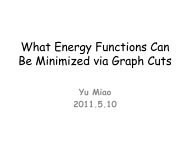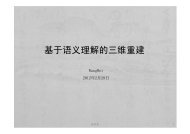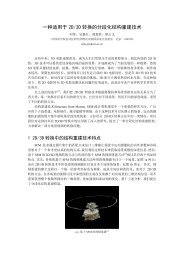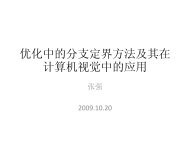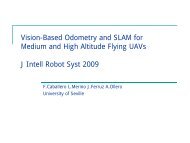Rotationally Invariant Descriptors using Intensity Order ... - IEEE Xplore
Rotationally Invariant Descriptors using Intensity Order ... - IEEE Xplore
Rotationally Invariant Descriptors using Intensity Order ... - IEEE Xplore
Create successful ePaper yourself
Turn your PDF publications into a flip-book with our unique Google optimized e-Paper software.
This article has been accepted for publication in a future issue of this journal, but has not been fully edited. Content may change prior to final publication.<br />
<strong>IEEE</strong> TRANSACTION ON PATTERN ANALYSIS AND MACHINE INTELLIGENCE 15<br />
3) <strong>Intensity</strong>-Based Local Feature: Our intensity-based feature is similar to CS-LBP [14],<br />
but it is calculated in a rotation invariant way, i.e., calculated in the locally rotation invariant<br />
coordinate system as shown in Fig. 5. Since our method aims to skip the rotation alignment of<br />
support region to achieve rotation invariance without resorting to an orientation for reference,<br />
such a modification is essential. For each sample point Xi, suppose that X j<br />
i ,j =1, 2, ··· , 2m<br />
are its 2m neighboring points regularly sampled along a circle. To obtain rotation invariance,<br />
X 1 i<br />
is located at the intersection of this circle and the positive x-axis in the local xy coordinate<br />
system. By comparing the intensities of opposite sample points, we get a m dimensional binary<br />
vector: (sign(I(X m+1<br />
i ) − I(X 1 i<br />
)), sign(I(Xm+2 i ) − I(X 2 i<br />
)), ··· , sign(I(Xm+m i ) − I(X m i<br />
))). Thena<br />
local feature FI(Xi) =(f I 1 ,fI 2 , ··· ,fI 2 m) of Xi can be obtained by mapping the m dimensional<br />
binary vector into a 2m dimensional vector:<br />
f I ⎧<br />
⎪⎨ 1, if<br />
j =<br />
⎪⎩<br />
m<br />
sign(I(X<br />
k=1<br />
k+m<br />
i ) − I(X k i )) × 2k−1 =(j − 1)<br />
0, otherwise<br />
Note that FI(Xi) has only one element to be 1, all the others are 0.<br />
D. Local Image Descriptor Construction<br />
⎧<br />
⎨ 1, x > 0<br />
, sign(x) =<br />
⎩ 0, otherwise<br />
(13)<br />
As our experiments show, one single support region is not enough to distinguish incorrect<br />
matches from correct ones in general. Two non-corresponding interest points may accidently<br />
have similar appearances in a certain local region. However, it is less likely that two non-<br />
corresponding interest points have similar appearances in several local regions of different sizes.<br />
In contrast, two corresponding interest points should have similar appearances in a local region<br />
of any size, although some small differences may exist due to localization error of interest<br />
point and region detection. That is to say, <strong>using</strong> multiple support regions, one can handle the<br />
mismatching problem better than <strong>using</strong> a single support region. Therefore, we utilize multiple<br />
support regions to construct our descriptors.<br />
As shown in Fig. 6, we choose support regions as the N nested regions centered at the<br />
interest point with an equal increment of radius. Suppose that the detected region is denoted by<br />
A ∈ℜ 2×2 . It is used as the minimal support region and so other support regions are defined<br />
as Ai = 1<br />
r2 A,i =1, 2, ··· ,N in which ri indicates the size of the ith support region. In this<br />
i<br />
November 26, 2011 DRAFT



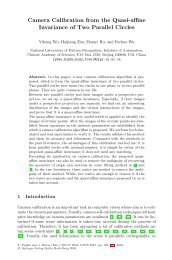
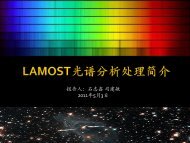
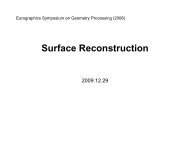
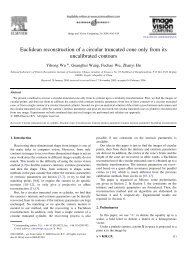
![Accurate, Dense, and Robust Multi-View Stereopsis (PMVS) [1,2,3]](https://img.yumpu.com/19388840/1/190x135/accurate-dense-and-robust-multi-view-stereopsis-pmvs-123.jpg?quality=85)


